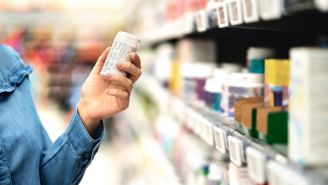Updated on March 22, 2024.
Since the first biosimilar was approved by the U.S. Food and Drug Administration (FDA) in 2015, 46 others have also received FDA-approval. Why is this a big deal?
High costs prevented or delayed nearly 13 million U.S. adults from getting their medications in the years leading up to the COVID pandemic, according to a 2021 analysis conducted by the nonprofit Urban Institute. Making life-saving medications more affordable and accessible is key to improving the health and well-being of people in the United States and other parts of the world. Like generic drugs, biosimilars promise to do just that.
But what are biosimilars? Do they work, are they safe—and how are they different from generics?
Biosimilars vs generics: What’s the difference?
Generic drugs have been around for about 30 years. They are copies of brand-name drugs that are just as safe and effective. But they cost a lot less since they do not have to repeat the same studies in animals and people as the original brand-name version did. Generics are given in the same form and dosage, and they are used for the same purposes as their brand-name counterparts. Generics also contain the same active ingredients and work in the same way as the brand-name version. They may look or taste different though since anything that doesn’t affect a drug’s effectiveness, like colorings or flavorings, may be different.
Biosimilars are similar in that they are improving access to biologic drugs used to help manage a range of chronic diseases, including inflammatory and autoimmune conditions as well as cancer. They are more affordable versions of biologics—but they are not generics or generic versions of biologics.
Learning about biologic drugs can help you understand what biosimilar drugs are—and how they work.
What are biologic drugs?
Biologics are medicines that are made in a living system, like yeast, bacteria, or animal cells. Because biologics come from natural sources, they are complex mixtures of substances, such as cells, tissues, sugars, proteins, and other compounds. While many conventional drugs can be taken in pill form, biologics are administered by self-injection, or intravenously (through a vein or blood vessel) in a healthcare provider’s office.
Biologics work in a variety of ways, such as helping the immune system find and kill cancer cells, helping the body make more red blood cells, or working on the immune system to reduce inflammation in autoimmune conditions, like rheumatoid arthritis.
Biologics can be powerful and very effective drugs, and some treat diseases for which no other therapy may exist. Still, biologics are costly to develop and produce. Their high price tags can be a barrier, preventing many people who could benefit from these drugs from getting them.
Biosimilars are allowing more people to access the treatment they need.
What are biosimilars—and how are they different from biologics?
Biosimilars are like generic versions of biologics, but they are not exact copies. They have the same level of quality, safety, and effectiveness as approved biologic drugs. They also have the same primary structure or sequence of amino acids (molecules used by living things to make proteins). But unlike conventional drugs with known chemical structures that can be precisely copied to make generic versions, biologics cannot be exactly duplicated since they come from living organisms that are naturally variable or different. For this reason, however, even biologics can also vary from batch to batch. And the small differences between biosimilars and biologics have not been shown to make a difference in their safety or effectiveness in treating diseases.
Biosimilars are more affordable. On average, they cost about half as much as the original biologics, and they are helping to lower biologic costs. As biologics come off patent, more and more biosimilars are receiving FDA approval and becoming available for use. In 2023 alone, six biosimilars received FDA approval and nine were launched onto the U.S. market (the largest number to become available at one time). And like generic drugs, more than one biosimilar may be available for any one brand-name biologic.
Biosimilars are used to treat at least 10 inflammatory and autoimmune diseases, such as rheumatoid arthritis (RA), inflammatory bowel disease (IBD), and type 1 diabetes. They are also used to manage the side effects of certain types of cancer treatment, and to treat at least 10 types of cancer, many of which can be hard to treat and include metastatic colorectal cancer, some forms of lung or breast cancer, and anemia (low red blood cells) caused by a medical condition.
Are biosimilars really as effective and safe as biologics?
To receive FDA approval, a biosimilar must meet the FDA’s strict standards for safety and effectiveness. They must be proven to be just as safe and effective in treating a certain disease as its brand-name biologic drug. Studies must show that the biosimilar and biologic originate from the same source, have the same dose and strength, are administered in the same way, have the same treatment benefits, and have the same possible side effects.
The difference is that biosimilar manufacturers do not need to conduct as many costly and long clinical trials. This saves time and development costs—but it does not affect drugs’ safety or effectiveness. The Biologics Price Competition and Innovation Act of 2009 created a shortened approval process to help patients gain quicker access to biologic treatments that are shown to be “highly similar” (biosimilars) or “interchangeable” with an FDA-approved biologic drug.
When a biosimilar is initially FDA-approved, it is not considered automatically interchangeable with its reference biologic (unlike a generic drug, which can be automatically substituted after FDA approval). For a biosimilar to be considered interchangeable, extra FDA approval based on additional information from clinical trials is required. In the U.S., a pharmacist may not substitute a biosimilar for an original biologic without first asking the prescribing healthcare provider—unless it has been specifically approved by the FDA as an interchangeable drug.
What are possible side effects of biosimilars?
Biosimilars may have the same side effects as their reference biologic drug. The most common side effects of biologics and biosimilars are pain and swelling at the injection site, and increased risk for serious infection, such as tuberculosis and bacterial or fungal infections.
Immunogenicity is also a possibility with both biologics and biosimilars. Immunogenicity is the tendency to develop antibodies against a biologic or biosimilar after receiving them (these are called anti-drug antibodies, or ADAs). These antibodies can cause hypersensitivity reactions, with symptoms that can range from mild to severe and include itching, rash, swelling, problems breathing, and a potentially life-threatening allergic reaction called anaphylaxis. ADAs can also cause reduced efficacy of the biologic or biosimilar, which may lead to treatment failure over time.







